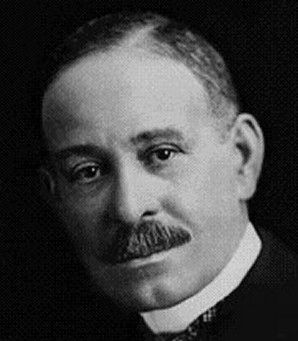Dr.Daniel Hale Williams III
Biography.com Editors,and James Janega
Daniel Hale Williams III was born on January 18, 1856, in Hollidaysburg, Pennsylvania, to Sarah Price Williams and Daniel Hale Williams II. The couple had several children, with the elder Daniel H. Williams inheriting a barber business. He also worked with the Equal Rights League, a black civil rights organization active during the Reconstruction era.
After the elder Williams died, a 10-year-old Daniel was sent to live in Baltimore, Maryland, with family friends. He became a shoemaker’s apprentice but disliked the work and decided to return to his family, who had moved to Illinois. Like his father, he took up barbering, but ultimately decided he wanted to pursue his education. He worked as an apprentice with Dr. Henry Palmer, a highly accomplished surgeon, and then completed further training at Chicago Medical College.
Williams set up his own practice in Chicago’s South Side and taught anatomy at his alma mater, also becoming the first African-American physician to work for the city’s street railway system. Williams—who was called Dr. Dan by patients— adopted sterilization procedures for his office informed by the recent findings on germ transmission and prevention from Louis Pasteur and Joseph Lister.
Due to the discrimination of the day, African-American citizens were still barred from being admitted to hospitals and black doctors were refused staff positions. Firmly believing this needed to change, in May 1891, Williams opened Provident Hospital and Training School for Nurses, the nation’s first hospital with a nursing and intern program that had a racially integrated staff. The facility, where Williams worked as a surgeon, was publicly championed by famed abolitionist and writer Frederick Douglass.
The first successful open-heart surgery took place on Chicago’s South Side on July 9, 1893. The patient was James Cornish, a young man with a knife wound to the chest from a barroom brawl. The surgeon, was Dr. Daniel Hale Williams.
The surgery took place in Provident Hospital, the city’s first interracial hospital, which Williams helped to found. Both patient and surgeon were African-American.
Medical textbooks of the time said that operating on a human heart was too dangerous, and there was no precedent for opening the chest, longtime Tribune science and medical reporter Ronald Kotulak wrote more than a century later.
Despite lacking X-rays, antibiotics, adequate anesthesia or other tools of modern surgery, Williams stepped in.
“With a scalpel, he cut a small hole in Cornish’s chest,” Kotulak wrote, “carefully picking his way past nerves, muscle, blood vessels and ribs until he reached the rapidly beating heart. Exploring the wound, Williams found a severed artery. He closed it with sutures, but then discerned an inch-long gash in the pericardium, the tough sac that surrounds the heart. The heart itself had only been nicked and did not need sutures. But the damaged sac had to be closed. With Cornish’s heart beating 130 times a minute beneath his nimble fingers, Williams closed the wound with catgut.”
Cornish lived, and Williams went on to acclaim. In 1894, Williams was appointed chief surgeon at the Freedmen’s Hospital in Washington D.C.,The facility had fallen into neglect and had a high mortality rate. Williams worked diligently on revitalization, improving surgical procedures, increasing specialization, launching ambulance services and continuing to provide opportunities for black medical professionals, among other feats. In 1895, he co-founded the National Medical Association, a professional organization for black medical practitioners, as an alternative to the American Medical Association, which didn’t allow African-American membership.
Williams left Freedmen’s Hospital in 1898. He married Alice Johnson, and the newlyweds moved to Chicago, where Williams returned to his work at Provident. Soon after the turn of the century, he worked at Cook County Hospital and later at St. Luke’s, a large medical institution with ample resources.
Beginning in 1899, Williams also made annual trips to Nashville, Tennessee, where he was a voluntary visiting clinical professor at Meharry Medical College for more than two decades. He became a charter member of the American College of Surgeons in 1913.
Daniel Hale Williams experienced a debilitating stroke in 1926 and died five years later, on August 4, 1931, in Idlewild, Michigan.
Today, Williams's work as a pioneering physician and advocate for an African-American presence in medicine continues to be honored by institutions worldwide.
Dr Daniel Hale Williams 300







































No comments:
Post a Comment